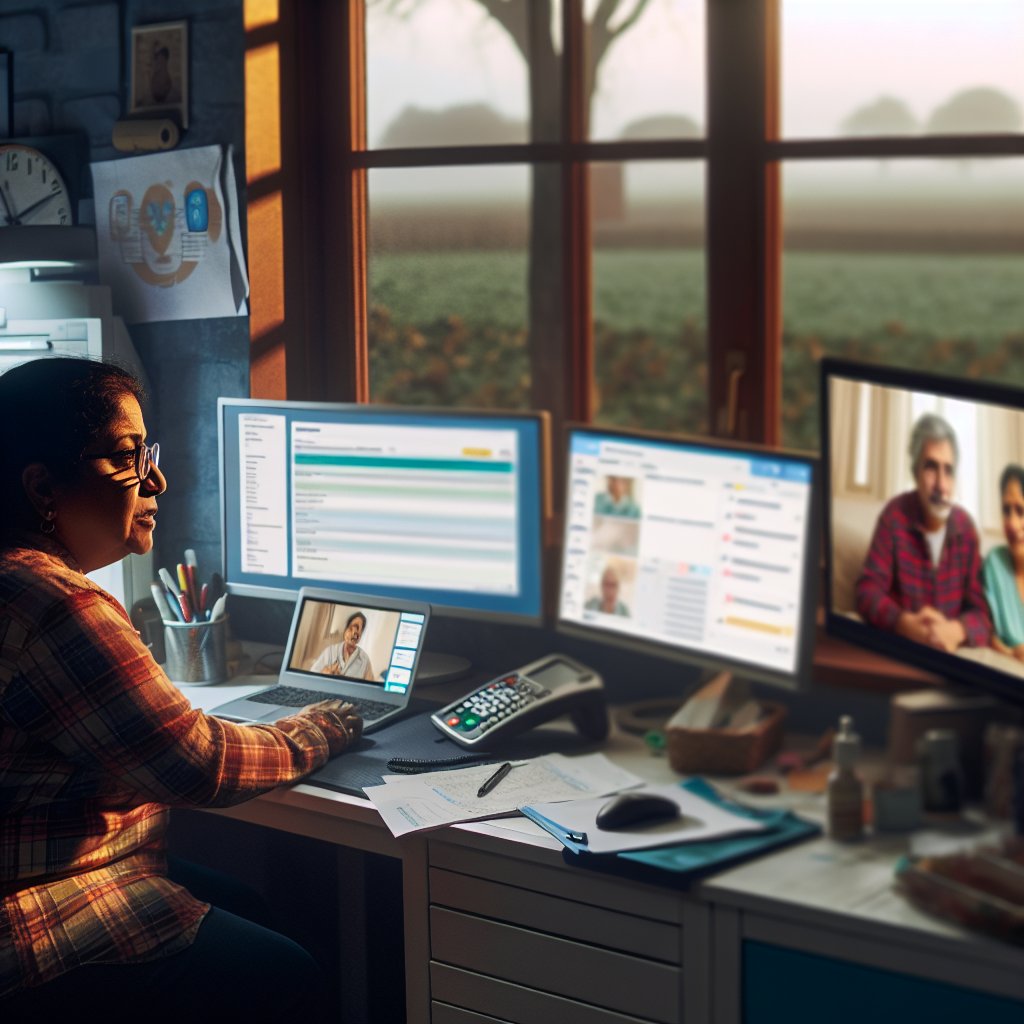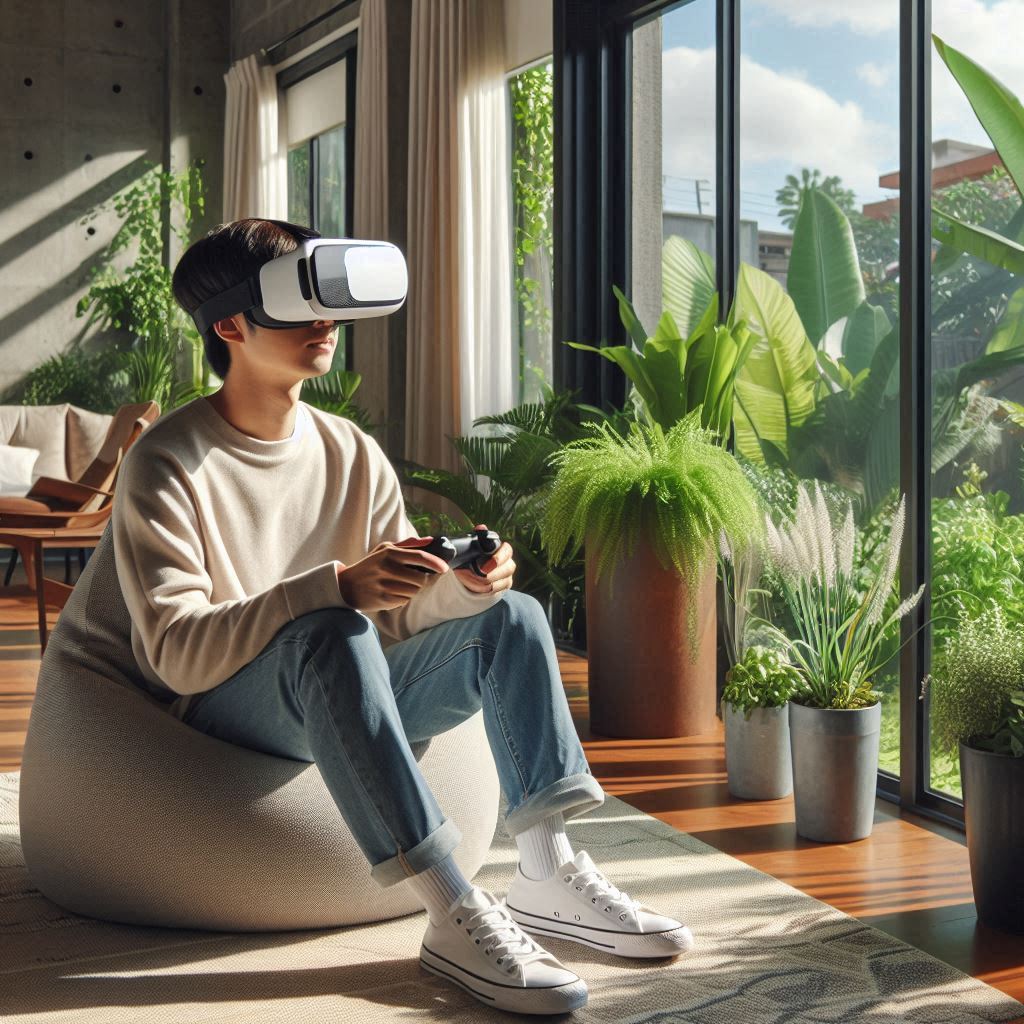Introduction
Definition of the smart office environment
A smart office environment leverages technology to enhance productivity and collaboration.
It integrates cutting-edge tools to streamline work processes and improve employee experience.
In today’s fast-paced world, understanding the future of work in these settings is crucial.
Importance of discussing the future of work
The future of work involves adapting to changes in technology, employee expectations, and workplace design.
Discussions around this topic help organizations prepare for emerging trends.
Companies must understand how to attract and retain talent in a smart office landscape.
Brief overview of technological advancements shaping smart offices
Technological advancements play a vital role in shaping smart offices.
IoT devices monitor resources, ensuring optimal use of energy and office space.
Smart lighting systems adjust to employee presence, creating a comfortable atmosphere.
Advanced communication tools facilitate seamless collaboration among remote and on-site teams.
Artificial intelligence also transforms the workplace.
AI-driven analytics provide insights on employee performance and productivity trends.
These insights enable managers to make informed decisions about workload distribution and team dynamics.
Moreover, virtual and augmented reality technologies create immersive training environments.
Employees can engage in realistic scenarios that enhance learning and retention.
This technology not only improves skills but also fosters team building among participants.
As remote work continues to rise, hybrid office models become increasingly popular.
Smart offices offer flexible workspaces that accommodate different preferences and working styles.
Employees gravitate towards spaces that empower them to thrive.
Therefore, the future of work in smart offices promises exciting opportunities.
Organizations must embrace technological advancements to stay competitive.
By focusing on innovation and employee experience, businesses can create a more engaging and productive work environment
Understanding Smart Office Concepts
As businesses evolve, so do their work environments.
Smart offices are at the forefront of this evolution.
The concept is transforming traditional workplaces into interconnected hubs of productivity.
Let’s explore the definition, characteristics, key technologies, and differences between smart and traditional office environments.
Definition and Characteristics of a Smart Office
A smart office is a modern workspace that integrates advanced technology.
It enhances collaboration, improves comfort, and increases efficiency.
Here are some defining characteristics:
- Connected Devices: Smart offices utilize IoT devices to facilitate communication and data sharing.
- Data-Driven Insights: They employ analytics to assess workplace effectiveness and employee satisfaction.
- Adaptive Spaces: Flexible work areas adapt to different functions and tasks, promoting teamwork and focus.
- Energy Efficiency: Smart offices prioritize sustainability with energy-saving technologies and renewable resources.
- Enhanced Security: Advanced surveillance and cybersecurity protect physical and digital assets.
Key Technologies Involved
Smart offices thrive on cutting-edge technologies that support their innovative framework.
The following key technologies play a significant role:
- Internet of Things (IoT): IoT connects devices, enabling smooth communication and operation across the office.
- Artificial Intelligence (AI): AI streamlines processes and offers personalized experiences based on data analysis.
- Automation: Automation technologies facilitate routine tasks, reducing manual workload on employees.
- Cloud Computing: Cloud services enhance collaboration by enabling access to files and applications from anywhere.
- Smart Lighting: Adaptive lighting systems adjust based on occupancy and natural light, improving comfort and saving energy.
Differences Between Traditional and Smart Office Environments
Understanding how smart offices differ from traditional workplaces reveals their potential advantages.
Here are some comparative points:
- Layout and Design: Traditional offices feature fixed cubicles, while smart offices offer flexible layouts that can change as needed.
- Technology Integration: Traditional workplaces often lack seamless tech, while smart offices use integrated systems for efficiency.
- Employee Engagement: Smart offices promote collaboration through shared spaces and technology, unlike the isolation often seen in traditional settings.
- Adaptability: Smart environments can quickly adapt to changes, such as remote work policies, while traditional offices are often rigid.
- Resource Management: Smart buildings utilize sensors to optimize resource usage, whereas traditional offices may waste resources through inefficiency.
The evolution to a smart office environment is not just about technology; it’s about people.
Employee experience enhances productivity and satisfaction, driving an organization’s success.
We Design & Develop Websites, Android & iOS Apps
Looking to transform your digital presence? We specialize in creating stunning websites and powerful mobile apps for Android and iOS. Let us bring your vision to life with innovative, tailored solutions!
Get Started TodayCompanies embracing smart office concepts inspire creativity and innovation through connectedness and adaptive design.
Hence, investing in a smart office offers numerous advantages.
It not only attracts top talent but also retains them by providing a work environment suited for modern needs.
Understanding these foundational concepts sets the stage for a deeper exploration of how smart offices shape the future of work.
Read: Life with IoT Devices: Revolutionizing Personal and Professional Life
The Role of Technology in Enhancing Productivity
In today’s fast-paced work environment, technology plays a crucial role in boosting productivity.
Smart office environments harness the power of various tools to create seamless workflows.
As organizations look for ways to enhance productivity, they increasingly rely on innovative technological solutions.
Overview of Productivity-Enhancing Tools in Smart Offices
Smart offices utilize a variety of tools designed to enhance collaboration and efficiency.
Below are some key categories of productivity-enhancing technology:
- Collaboration Platforms: Tools like Slack and Microsoft Teams help teams communicate in real time, regardless of location.
- Project Management Software: Applications such as Trello and Asana assist teams in managing tasks and deadlines effectively.
- Cloud Storage Solutions: Services like Google Drive and Dropbox enable easy sharing and access to files from anywhere.
- Video Conferencing Tools: Platforms like Zoom and Google Meet facilitate remote meetings, reducing travel time and costs.
- Time Management Apps: Tools such as Toggl and RescueTime help users track their time usage and productivity levels.
These tools streamline processes, enhance communication, and foster collaboration among team members.
They also create a more flexible work environment.
Employees can collaborate in real time, making remote work increasingly viable and efficient.
Case Studies Showcasing Increased Productivity
Many organizations have reported significant productivity enhancements after integrating smart office technology.
Here are a few noteworthy examples:
- Siemens: After implementing Microsoft Teams, Siemens experienced a 50% reduction in email traffic. Team members reported faster decision-making processes due to improved communication channels.
- Deloitte: By adopting Asana, Deloitte saw a 30% increase in project completion rates. The software helped teams prioritize their tasks more effectively.
- IBM: Utilizing Zoom for meetings led to a 20% reduction in meeting time. Teams could quickly resolve issues without lengthy discussions.
- Unilever: Implementing automated time tracking through Toggl allowed Unilever to discover workflow inefficiencies. The knowledge led to improved resource allocation and higher productivity.
These case studies emphasize the impact of technology on productivity.
By adopting the right tools, organizations can achieve remarkable results in efficiency and output.
How Technology Helps in Automating Mundane Tasks
Technology significantly alleviates the burden of repetitive tasks.
Automation allows employees to focus on higher-value activities that require creativity and critical thinking.
Here are some commonly automated tasks in smart offices:
- Data Entry: Tools like Zapier can automatically transfer data between applications, reducing manual input.
- Email Responses: AI-driven tools like Gmail’s Smart Reply suggest quick responses to common queries, saving time.
- Scheduling Meetings: Applications like Calendly automate scheduling by integrating with your calendar, making it easier to find suitable times for all participants.
- Document Creation: Platforms like Microsoft Word now offer templates and intelligent suggestions to speed up document creation.
- Reminder Alerts: Automation tools can send reminders for upcoming deadlines and meetings, ensuring nothing falls through the cracks.
By eliminating mundane tasks, technology empowers employees to engage in more meaningful work.
The ability to focus on strategic initiatives rather than routine chores enhances job satisfaction and motivation.
Future-Proofing Through Technology
As technology continues to evolve, smart offices must adapt to stay relevant.
Future trends indicate an increasing reliance on AI and machine learning.
These advancements promise further improvements in productivity and efficiency.
- AI-Powered Analytics: Organizations can utilize AI to analyze employee performance data. This insight enables better decision-making and targeted training.
- Virtual Reality (VR) Training: Companies can employ VR for immersive training experiences, enhancing learning outcomes and engagement.
- IoT-Enabled Devices: Smart sensors can monitor office environments, adjusting temperature and lighting based on occupancy for greater comfort.
- Robotic Process Automation (RPA): RPA can handle complex workflows, enabling employees to spend more time on strategic work.
- Predictive Tools: These can help businesses forecast workload and resource needs, leading to more proactive management.
Embracing these technological trends will help organizations create smarter, more efficient workplaces.
Future-proofing efforts ensure that companies can adapt to new challenges as they arise.
In fact, technology plays an indispensable role in enhancing productivity in smart offices.
From collaboration tools to automation, the right technology creates a thriving work environment.
As organizations continue to evolve, they must remain committed to leveraging technology to improve productivity.
By doing so, they empower their teams to achieve remarkable outcomes.
Read: Smart Home Technologies for Everyday Life: Top Enhancements
Impact of Remote Work on Office Design
Evolution of Remote Work and Its Lasting Effects
Remote work has transformed significantly over the last decade.
The COVID-19 pandemic accelerated this transformation.
Many companies were forced to adopt remote work practices.
We Design & Develop Websites, Android & iOS Apps
Looking to transform your digital presence? We specialize in creating stunning websites and powerful mobile apps for Android and iOS. Let us bring your vision to life with innovative, tailored solutions!
Get Started TodayEmployees quickly adapted to working from home.
This shift has left a lasting impact on office design.
Businesses are now recognizing the benefits of flexibility.
Studies show that remote work increases productivity and employee satisfaction.
Workers appreciate the freedom to choose their work environments.
Additionally, companies save on overhead costs when employees work remotely.
As remote work continues, its influence on office design becomes clear.
Traditional office layouts are becoming obsolete.
The emphasis is shifting to collaborative spaces.
Employers design workspaces that accommodate both in-office and remote employees.
This evolution leads to a reimagined approach to office environments.
How Smart Office Designs Cater to Hybrid Work Models
Smart office designs are now essential.
These innovative spaces cater to hybrid work models.
Hybrid environments provide flexibility.
Employees can work both remotely and in the office.
Key elements define smart office designs:
- Technology Integration: Smart offices use technology to enhance productivity. Tools for video conferencing and collaboration are readily available.
- Flexible Workspaces: Adjustable furniture transforms areas for various tasks. Employees can choose their preferred work setup.
- Data-driven Insights: Smart sensors collect information on space usage. Employers can optimize layouts based on actual employee needs.
- Health and Wellbeing Features: Air quality, lighting, and noise control enhance employee comfort. These features improve overall wellbeing.
Office designs now require versatile workstations.
These spaces accommodate different work styles.
Employees can easily transition from focused tasks to collaborative projects.
Smart designs promote this fluidity through various areas for interaction.
Strategies for Maintaining Collaboration Despite Physical Distance
Collaboration remains crucial in a hybrid work environment.
Businesses must devise strategies to foster teamwork.
Maintaining communication is essential for productivity and creativity.
Organizations can adopt several effective strategies:
- Regular Virtual Meetings: Schedule consistent check-ins and brainstorming sessions. These meetings encourage team members to collaborate despite location.
- Collaborative Tools: Utilize platforms for project management and communication. Tools like Slack and Trello keep teams connected.
- Shared Digital Workspaces: Implement cloud solutions that allow real-time collaboration. Employees can work together on documents and projects from anywhere.
- Team-building Activities: Organize virtual events and social gatherings. These activities strengthen relationships and foster a sense of community.
Inclusivity is crucial in hybrid designs.
Employers should ensure all employees feel involved.
Use technology to share resources and provide equal access.
This step is vital for maintaining a cohesive team culture.
The landscape of work environments is evolving rapidly.
Remote work has permanently altered office design.
Employers must adapt to these changes.
Emphasizing flexibility and collaboration is essential for success.
Smart office designs cater to diverse work styles.
These designs promote productivity while prioritizing employee wellbeing.
By embracing innovative layouts and technology, businesses enhance collaboration.
We Design & Develop Websites, Android & iOS Apps
Looking to transform your digital presence? We specialize in creating stunning websites and powerful mobile apps for Android and iOS. Let us bring your vision to life with innovative, tailored solutions!
Get Started TodayAs organizations navigate this new era, they should prioritize employee needs.
With thoughtful designs and strategies, a harmonious balance between remote and in-office work can thrive.
The future of work promises flexibility, connectivity, and a focus on employee experience.
Read: Life with AI: Transforming Daily Tasks Using Modern Tools

Workplace Flexibility and Employee Well-Being
Flexibility in modern workspaces has become paramount.
The traditional nine-to-five job model no longer meets the needs of today’s workforce.
Employees increasingly desire the ability to choose their own working hours and environments.
This desire stems from the need for a better work-life balance.
Organizations that embrace flexibility attract and retain talent.
They foster a culture of trust and accountability.
Importance of Flexibility in Modern Workspaces
Flexible workspaces enhance employee satisfaction and performance.
Businesses that offer flexible options report higher productivity levels.
Here are some key benefits:
- Enhanced Job Satisfaction: Employees feel empowered when they control their work schedules.
- Increased Productivity: Individuals often perform better in environments they choose.
- Reduced Commuting Stress: Remote work options significantly decrease travel time.
- Better Work-Life Balance: Flexibility allows employees to juggle personal commitments effectively.
- Attracting a Diverse Workforce: Flexibility accommodates various lifestyles and needs.
Modern technology facilitates this shift toward flexible work arrangements.
Cloud-based tools and collaboration software allow seamless communication.
Employees can work from anywhere, breaking geographical barriers.
This adaptability promotes inclusivity and diversity, enriching the workplace.
Integrating Health and Wellness Technologies
The integration of health and wellness technologies is crucial in smart office environments.
Smart offices utilize innovative designs to enhance employee well-being.
Ergonomic designs reduce physical strain and prevent injuries.
Such designs often include adjustable desks and supportive chairs.
These elements promote proper posture and comfort, contributing to overall health.
Apart from ergonomic furniture, air quality sensors play a vital role.
They monitor indoor air quality in real time.
Poor air quality can lead to health issues like headaches and respiratory problems.
By ensuring optimal air quality, smart offices enhance employee focus and productivity.
Notable Health and Wellness Technologies
- Wearable Devices: These track physical activity and monitor health metrics.
- Smart Lighting: Adjustable lighting helps reduce eye strain and enhances mood.
- Environmental Sensors: These ensure comfortable humidity and temperature levels.
- Telehealth Solutions: Virtual healthcare options enhance accessibility to medical support.
- Mindfulness Tools: Applications promoting mental wellness assist in managing stress.
Implementing these technologies fosters a culture of health and wellness.
They not only promote physical health but also enhance mental well-being.
Organizations that prioritize health and wellness see more engaged and productive employees.
The Role of Smart Offices in Promoting Mental Health
Smart offices actively contribute to promoting mental health.
These environments are designed with employee well-being in mind.
Natural elements, such as plants and natural light, create serene spaces.
Such atmospheres help reduce stress levels and promote relaxation.
Smart technology also enables employees to take breaks effectively.
For example, monitoring systems remind individuals to stand and stretch.
We Design & Develop Websites, Android & iOS Apps
Looking to transform your digital presence? We specialize in creating stunning websites and powerful mobile apps for Android and iOS. Let us bring your vision to life with innovative, tailored solutions!
Get Started TodayRegular breaks can significantly improve focus and creativity.
Additionally, collaborative spaces encourage social interactions.
This interaction can alleviate feelings of isolation, particularly in remote work settings.
Beyond physical environments, smart offices can offer mental health resources.
Companies can provide access to counseling and therapy services.
Workshops on stress management and resilience can be beneficial.
Such initiatives demonstrate a commitment to employee mental health.
Key Strategies for Promoting Mental Well-being
- Creating Relaxation Zones: Designate areas for employees to unwind and recharge.
- Encouraging Open Communication: Foster an environment where employees feel safe to share concerns.
- Implementing Flexible Work Policies: Allow personalized work arrangements that suit individual needs.
- Providing Mental Health Resources: Offer workshops and access to professional support.
- Encouraging Social Interaction: Organize team-building activities to enhance collaboration.
As companies recognize the importance of mental health, they create supportive work environments.
Employees who feel supported experience lower stress levels.
This leads to greater job satisfaction and loyalty.
In essence, the future of work lies in embracing flexibility and prioritizing employee well-being.
Smart office environments will play an essential role in this transformation.
Companies that invest in adaptable workspaces and health technologies will thrive.
They will create workplaces where employees feel valued and empowered.
As a result, businesses will enjoy increased productivity, innovation, and overall success.
Read: Activewear As Everyday Fashion: The Rise of Athleisure
Collaboration and Communication in Smart Offices
The rise of smart offices redefines how we perceive collaboration and communication.
Technology plays an essential role in this transformation.
It creates an environment where effective communication drives productivity and innovation.
Let’s explore the vital aspects of collaboration and communication in smart office environments.
Technology Enabling Enhanced Communication
Smart offices harness advanced technology to facilitate seamless communication.
Various tools and software enhance workplace collaboration significantly.
Here are some key technologies reshaping communication:
- Video Conferencing Tools: Platforms like Zoom, Microsoft Teams, and Google Meet enable face-to-face interactions, regardless of physical location. They empower teams to collaborate in real time and foster a sense of connection.
- Collaborative Software: Tools such as Slack, Trello, and Asana streamline project management. These applications enhance task tracking, information sharing, and feedback, ensuring everyone stays on the same page.
- Instant Messaging: Chat tools provide quick communication channels for teams. They eliminate lengthy email chains, allowing for faster responses and decision-making.
- Document Sharing Platforms: Applications like Google Drive and Dropbox foster collaboration on documents. Multiple users can access and edit files simultaneously, making teamwork more efficient.
- Virtual Reality (VR): VR technology enables immersive collaboration experiences. Teams can hold virtual meetings in a simulated environment, enhancing engagement and interaction.
These tools transform traditional collaboration methods, supporting flexibility and inclusivity.
They allow teams to overcome geographical barriers and adapt to dynamic work environments.
As technology advances, the opportunities for enhanced communication will expand even further.
Designing Spaces for Spontaneous Collaboration
The physical layout of smart offices plays a crucial role in fostering collaboration.
Thoughtfully designed spaces encourage spontaneous interactions among team members.
Here are some design elements that enhance collaboration:
- Open Workspaces: Open floor plans break down silos. They promote visibility and encourage casual conversations among colleagues, leading to idea exchange.
- Collaboration Zones: Designated areas for teamwork offer comfortable seating, whiteboards, and technology access. These zones inspire brainstorming sessions and active participation.
- Quiet Spaces: Providing quiet areas allows individuals to focus when needed. These spaces balance collaboration with personal productivity, catering to various work styles.
- Flexible Furniture: Movable furniture accommodates different group sizes and activities. This adaptability encourages team members to rearrange spaces for optimal collaboration.
- Breakout Rooms: Small rooms designed for team discussions foster deeper conversations. Teams can brainstorm in a more intimate setting without disturbance.
Moreover, incorporating technology into these spaces is vital.
Visual displays, smart boards, and audio equipment enhance the collaborative experience.
The key is to create environments that stimulate creativity and camaraderie.
Future Trends in Team Dynamics and Interactions
As smart office models evolve, so do team dynamics and interactions.
The future of work will witness notable changes in how teams collaborate.
Here are some anticipated trends:
We Design & Develop Websites, Android & iOS Apps
Looking to transform your digital presence? We specialize in creating stunning websites and powerful mobile apps for Android and iOS. Let us bring your vision to life with innovative, tailored solutions!
Get Started Today- Increased Remote Work: As remote work continues to rise, teams will adopt hybrid models. This flexibility allows collaboration across global teams while maintaining local office spaces.
- AI-Driven Collaboration Tools: Artificial intelligence will play a significant role in enhancing communication. AI tools can analyze team interactions and suggest improvements in workflows.
- Augmented Reality (AR): Tools that utilize AR will facilitate interactive workshops. Teams will visualize data and concepts more effectively, improving understanding and collaboration.
- Focus on Employee Well-being: Companies will prioritize mental health in collaboration strategies. Supporting employee well-being fosters stronger team dynamics, reducing burnout.
- Diversity and Inclusion: Future workplace strategies will prioritize diverse teams. Companies will embrace inclusivity, recognizing its value in driving innovative ideas and solutions.
These trends will shape the workforce of tomorrow, redefining collaboration and communication methods.
As companies adapt to these changes, they will cultivate a culture of collaboration that encourages creativity and productivity.
Basically, smart offices will fundamentally enhance collaboration and communication.
Technology enables real-time interactions, while office designs foster spontaneous teamwork.
The future promises continued evolution, with emerging trends reshaping team dynamics.
Embracing these changes will empower organizations to thrive in an increasingly competitive landscape.
As we adapt to this new paradigm, collaboration will remain a cornerstone of workplace success.
Sustainability and Energy Efficiency
In today’s rapidly evolving world, sustainability plays a vital role in office design.
Modern businesses recognize the impact of their operations on the environment.
As a result, companies increasingly prioritize eco-friendly practices.
This shift is not merely a trend; it reflects a fundamental change in attitudes toward consumption and waste.
The Importance of Sustainability in Modern Designs
Businesses face pressure from consumers and governments to adopt sustainable practices.
These practices encompass various strategies that minimize environmental footprints.
Here are some critical reasons for prioritizing sustainability:
- Consumer Demand: Today’s consumers prefer brands that demonstrate environmental responsibility.
- Regulatory Compliance: Governments worldwide implement stricter environmental laws.
- Cost Savings: Sustainable practices often lead to reduced operational costs.
- Employee Satisfaction: Sustainable workplaces promote higher employee morale and retention.
- Brand Image: Companies known for sustainability can differentiate themselves from competitors.
Incorporating sustainability into office design leads to a positive impact.
Smart offices not only address carbon emissions but also enhance the overall work environment.
Designers now prioritize sustainability through material selection and energy usage.
How Smart Offices Utilize Energy-Efficient Technologies
Smart offices integrate advanced technologies that optimize energy efficiency.
These innovations enhance productivity while reducing energy consumption.
Some key technologies include:
- Smart Lighting: Automated lighting systems adjust brightness based on occupancy and natural light.
- Energy Management Systems: Centralized platforms monitor energy use and identify opportunities for savings.
- Smart HVAC Systems: These adjust heating and cooling based on individual room usage and external conditions.
- Smart Windows: Electrochromatic glass changes tint to control heat and light without energy use.
- Renewable Energy Sources: Many smart offices install solar panels to reduce reliance on non-renewable energy.
By adopting these technologies, smart offices reduce energy costs significantly.
Furthermore, they help companies brand themselves as leaders in sustainability.
This leads to long-term benefits in both finance and reputation.
Case Studies of Sustainable Practices in Smart Office Environments
Analyzing real-world examples illustrates how companies implement sustainable practices in smart office environments.
These case studies demonstrate adaptability and innovation in sustainability:
Case Study 1: Google’s Bay View Campus
Google’s Bay View Campus emphasizes energy efficiency and sustainable design.
The campus features:
- Solar panels generating renewable energy.
- Natural ventilation systems reducing reliance on mechanical cooling.
- Extensive landscaping using native plants to conserve water.
- Smart lighting that minimizes energy usage by adapting to daylight levels.
- Rainwater harvesting systems used for irrigation and fixtures.
These initiatives contribute to a significant reduction in carbon footprint, showcasing the balance between work and environmental stewardship.
Case Study 2: Salesforce Tower in San Francisco
Salesforce Tower exemplifies a commitment to sustainability.
This skyscraper integrates numerous green technologies:
- LEED Platinum certification for outstanding energy performance.
- Efficient water recycling and conservation systems.
- Active energy management using real-time monitoring tools.
- Dedicated green roof spaces for urban biodiversity.
- Occupant comfort considered with advanced climate control systems.
Salesforce Tower stands as a model for future urban development, blending sustainability and professional space seamlessly.
Case Study 3: The Edge in Amsterdam
The Edge is not only a remarkable architectural feat but also a leader in sustainability.
Its features include:
- Solar panels providing a portion of the building’s energy needs.
- Use of recycled materials throughout the construction process.
- Smart building systems that enhance user comfort and energy efficiency.
- Workspaces that adapt to the needs of employees, promoting well-being.
- Biophilic design principles, incorporating nature into the work environment.
The Edge represents the future of smart design, prioritizing both sustainability and productivity.
The future of work lies in smart office environments that prioritize sustainability and energy efficiency.
We Design & Develop Websites, Android & iOS Apps
Looking to transform your digital presence? We specialize in creating stunning websites and powerful mobile apps for Android and iOS. Let us bring your vision to life with innovative, tailored solutions!
Get Started TodayCompanies embracing these principles not only enhance their operational efficacy but also contribute positively to the planet.
As we look ahead, it is crucial for businesses to continue innovating and adapting sustainable practices.
This transition represents a commitment to future generations and signifies a shift toward a more responsible approach to work.
Data Security and Privacy Concerns
The modern workplace is evolving rapidly.
With the rise of smart offices, companies embrace technology for enhanced productivity and collaboration.
However, this transformation also brings significant challenges, primarily related to data security and privacy.
As organizations deploy interconnected devices and platforms, they risk exposing sensitive information.
Addressing these concerns is vital as we move into a smarter future of work.
Risks Associated with Connected Devices and Data Sharing
Smart offices rely on various connected devices, including sensors, cameras, and employee workstations.
While these devices improve efficiency, they also pose security risks:
- Data Breaches: Cybercriminals exploit vulnerabilities in connected devices. Unauthorized access can lead to data theft, compromising sensitive information.
- Inadequate Encryption: Many devices do not use encryption adequately. This inadequacy makes it easier for attackers to intercept data during transmission.
- IoT Vulnerabilities: The Internet of Things (IoT) creates various points of entry for malicious actors. Each device adds complexity to the security landscape.
- Human Error: Employees can inadvertently expose data through poor security practices. Accidental sharing or using weak passwords increases risks dramatically.
- Insider Threats: Current employees can become threats, either maliciously or inadvertently. Disgruntled workers or those unaware of security protocols create vulnerabilities.
Strategies for Ensuring Data Security in Smart Offices
To protect data in smart offices, organizations must adopt comprehensive security strategies.
Deploying robust security measures ensures valuable information remains safe:
- Regular Security Audits: Conduct frequent assessments of your systems. Identify vulnerabilities before cybercriminals can exploit them.
- Device Management Policies: Implement strict policies around connected devices. Ensure only authorized devices are allowed to access sensitive information.
- Data Encryption: Employ strong encryption methods. Encrypt data both in transit and at rest to mitigate risks associated with unauthorized access.
- Access Control Mechanisms: Limit access to sensitive information based on roles. Use multifactor authentication to add layers of security.
- Employee Training Programs: Educate employees about cybersecurity threats. Regularly conduct training sessions to promote safe practices.
- Incident Response Plans: Prepare for potential security breaches with response plans. Outline steps to take during a data breach, including notification of affected parties.
Importance of Privacy in the Future Workplace
Privacy holds immense importance in the evolving workplace.
Employees expect their personal information to be secure and protected:
- Employee Trust: When organizations prioritize privacy, they build trust with their employees. Awareness of privacy measures reassures staff about their data’s safety.
- Compliance with Regulations: Many regions enforce strict data protection laws. Businesses must comply to avoid legal repercussions and hefty fines.
- Enhanced Productivity: When employees feel secure, they focus better on their work. A positive atmosphere fosters creativity and drives performance.
- Reputation Management: Data breaches can damage a company’s reputation. Protecting privacy strengthens brand integrity and customer loyalty.
- Safeguarding Intellectual Property: Companies must protect their proprietary information. Safeguarding data helps maintain a competitive advantage in the market.
In short, navigating the future of work in a smart office environment requires careful consideration of data security and privacy issues.
The risks associated with connected devices and data sharing demand a proactive approach.
Organizations must implement effective strategies to safeguard sensitive information and ensure employee privacy.
By addressing these challenges head-on, companies can create a secure work environment that fosters innovation and collaboration while protecting essential data.
The successful integration of smart technology in the workplace will hinge on the ability to maintain data security and respect privacy in an increasingly connected world.
Future Trends in Smart Office Environments
The world of work is changing rapidly.
Smart offices are becoming the norm, redefining how organizations operate.
In the next decade, we predict several key trends that will shape smart workplaces.
Predictions for the Evolution of Smart Workplaces
Smart offices are becoming integral to business success.
As technology advances, companies will adopt new solutions to improve work environments.
Here are some anticipated trends:
- Increased Use of Artificial Intelligence: AI will automate routine tasks. This will allow employees to focus on more strategic work.
- Enhanced Remote Work Capabilities: Flexible work arrangements will become standard. Companies will invest in tools that facilitate remote collaboration.
- Biophilic Design Elements: Incorporating nature into office designs will rise. Green walls, natural light, and indoor gardens will promote well-being.
- More Collaborative Spaces: The layout will prioritize teamwork. Open areas and meeting pods will foster creativity and innovation.
- Data-Driven Decision Making: Companies will harness big data to improve operations. Analyzing employee behavior will guide workplace design.
Potential Challenges Companies May Face
As organizations shift to smart offices, they will encounter various challenges.
These challenges may hinder progress if not addressed effectively.
Here are some key obstacles companies must consider:
- Cybersecurity Threats: Increased connectivity exposes companies to potential data breaches. Organizations must invest in robust cybersecurity measures.
- Technology Overload: Employees may feel overwhelmed by constant connectivity. Proper boundaries will be essential to ensure a healthy work-life balance.
- Resistance to Change: Some employees may resist new technology or processes. Effective change management practices will be necessary to address concerns.
- High Implementation Costs: Smart technologies can be expensive to implement. Companies should carefully evaluate ROI before investments.
- Interoperability of Systems: New technologies must work seamlessly together. Organizations will need to ensure compatibility across software and hardware.
The Changing Role of Management in Smart Office Settings
As offices become smarter, the role of management will transform significantly.
Managers will need to adapt to these changes to lead effectively.
Here are some evolving aspects of management in smart office settings:
- Focus on Results, Not Hours: Management will prioritize outcomes over time spent. This shift will encourage a culture of accountability and flexibility.
- Enhanced Communication Skills: Communication will become even more crucial in remote work environments. Leaders will need strong interpersonal skills to connect with teams.
- Data Literacy: Managers will need to understand data trends and analytics. This knowledge will help them make informed decisions based on insights.
- Empowerment of Employees: Managers will increasingly delegate decision-making authority. This empowers teams to take ownership and innovate.
- Fostering a Culture of Continuous Learning: Lifelong learning will be vital for growth. Managers will support learning initiatives and professional development opportunities.
Generally, the future of work in smart office environments holds immense potential.
Companies will revolutionize their operations through technology and innovative design.
However, they must also navigate significant challenges.
Management will play a critical role in ensuring that companies adapt effectively.
We Design & Develop Websites, Android & iOS Apps
Looking to transform your digital presence? We specialize in creating stunning websites and powerful mobile apps for Android and iOS. Let us bring your vision to life with innovative, tailored solutions!
Get Started TodayEmbracing these future trends will enable organizations to thrive in an ever-changing landscape.
Conclusion
Recap of key points discussed
In today’s rapidly evolving workplace, adaptability is crucial for success.
We discussed several key points about smart office environments.
First, technology profoundly impacts how we work.
Smart offices enhance productivity through automation and connectivity.
Second, these environments foster collaboration and creativity among teams.
Emphasize the importance of embracing smart office environments for future success
We explored how smart technologies like IoT devices can streamline tasks.
They optimize energy usage and create comfortable working conditions.
Intuitive software solutions enable seamless communication, breaking down traditional office barriers.
The rise of remote work also requires us to rethink office design.
A flexible approach meets diverse employee needs and preferences.
Moreover, prioritizing employee well-being leads to greater job satisfaction.
Smart offices address mental health through optimized workspaces and wellness initiatives.
Organizations that adopt these measures witness improved employee retention rates.
Investing in a smart office environment yields long-term benefits for productivity and morale.
Call to action for businesses to start adapting to the changing landscape of work
Embracing smart offices is not merely a trend but a necessity.
Companies that resist change risk losing talented employees to innovative competitors.
The future of work involves recognizing the importance of technology in daily operations.
These changes allow businesses to remain agile in a fast-paced environment.
It is imperative for businesses to embrace the smart office movement.
By doing so, they position themselves for future success.
Organizations should start exploring how to integrate smart technologies into their workplaces.
The changing landscape of work is here to stay; adaptation is no longer optional.
Your call to action is clear: evolve your workspace. Invest in technologies that promote collaboration and well-being.
Your employees will thank you, and your business will thrive.
Before You Go…
Hey, thank you for reading this blog post to the end. I hope it was helpful. Let me tell you a little bit about Nicholas Idoko Technologies.
We help businesses and companies build an online presence by developing web, mobile, desktop, and blockchain applications.
We also help aspiring software developers and programmers learn the skills they need to have a successful career.
Take your first step to becoming a programming expert by joining our Learn To Code academy today!
Be sure to contact us if you need more information or have any questions! We are readily available.
Put Your Tech Company on the Map!
Get featured on Nicholas Idoko’s Blog for just $200. Showcase your business, boost credibility, and reach a growing audience eager for tech solutions.
Publish Now










